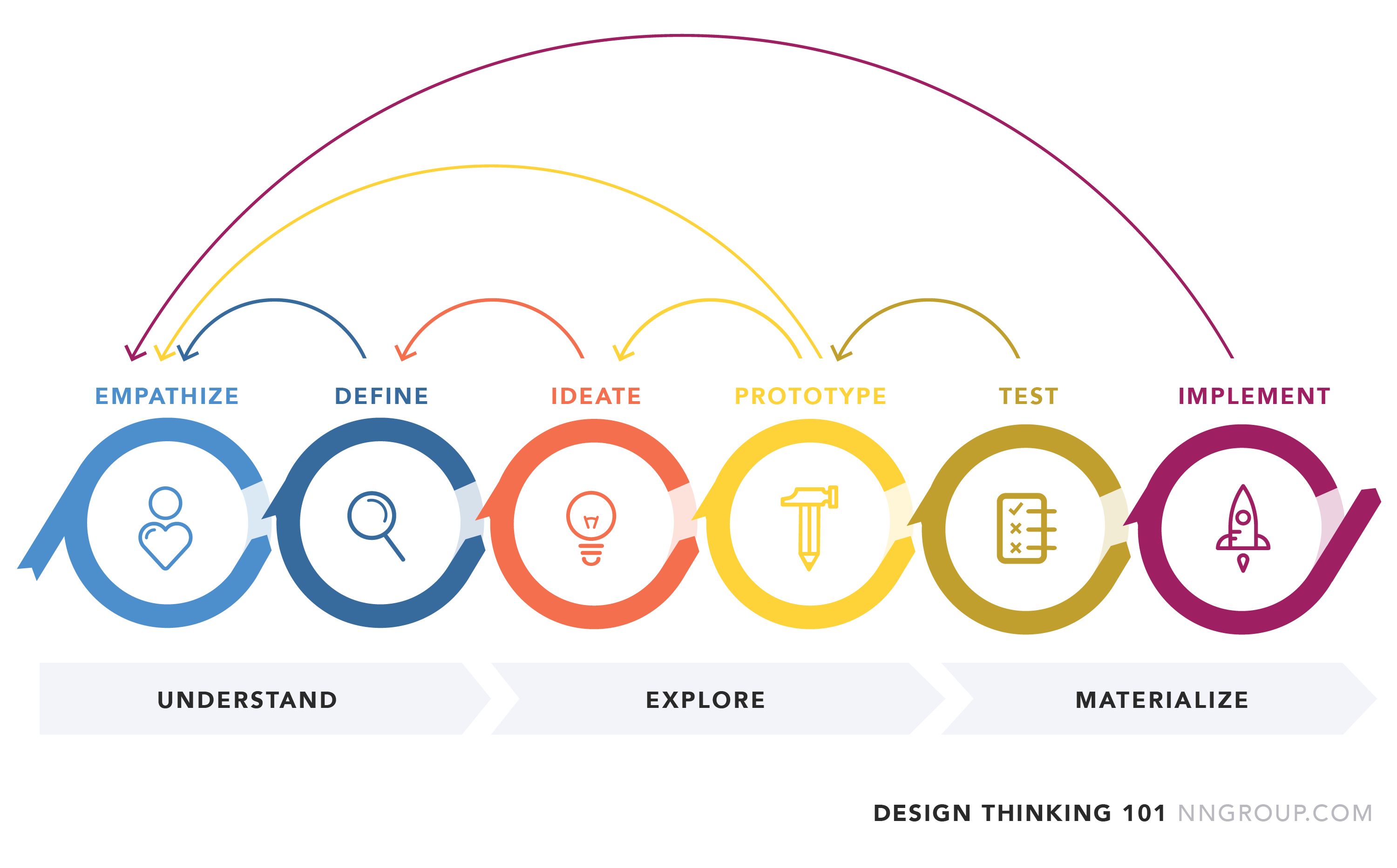7
LearnINN Playlist - Innovation in Youth Work
LearnINN Playlist - Innovation in Youth Work
Conținut
This Learning Playlist guides you through the key steps of the Design Thinking process:
- Empathise
- Define
- Ideate
- Prototype
- Test
It is framed within the context of youth work and innovation.
As you progress through the activities, you will explore how a Human-centred design, digital tools, and creative collaboration can help tackle real challenges in your work.
Completing this playlist and collecting at least 4 thematic badges will earn you the final recognition badge for your active learning about innovation development in the field of youth work.
The total learning time is 30 hours, consisting of individual and group learning both in-person and online.
Learning and digital open badges earned in this learning playlist are aligned with the ETS competence model for youth workers (https://europeantrainingstrategy.eu/yocomo/), as well as the EntreComp competence framework (https://joint-research-centre.ec.europa.eu/entrecomp-entrepreneurship-competence-framework_en) and the ESCO database (https://esco.ec.europa.eu/en).
This Learning Playlist is part of the KA2 Cooperation Partnership project Learn INN, supported by the European Union’s Erasmus+ programme.

Activități de finalizat
Finalizează următoarele activități, câștigă insigne și vei vedea progresul playlistului tău actualizat
Conținut
Human-Centered Design Thinking is a creative and collaborative approach to problem-solving that starts with people. It encourages us to deeply understand the needs, hopes, and challenges of the individuals we are working with – in this case, young people.
Rather than jumping to solutions, this method invites us to ask questions, listen, empathise, and co-create ideas that truly matter. It has five main stages: Empathise, Define, Ideate, Prototype, and Test – though they don’t always follow a strict order. Depending on the design school, these phases might be called differently. In some cases it has few more stages.

For example IDEO agency, famous for it's Human-Centred design work introduces more granular steps around the same flow: Frame a Question - Gather Inspiration - Synthesize for Action - Generate Ideas - Make Ideas Tangible - Test to Learn - Share a Story.

In youth work and non-formal education, Human-Centred Design empowers us to:
• Engage young people as partners, not just participants.
• Develop programmes, tools, and solutions that respond to real needs.
• Build creative confidence and collaborative spirit in the process.
In this activity, you’ll explore the Empathise phase – a cornerstone of human-centred thinking that helps uncover insights through listening and observation.
Read more about specific aspects of Human-centered Design thinking, focusing on the Empathise and Define phases.
Watch: Design Thinking Process in a simple animated explainer video
3. Share Your Insights
Post one insight or unexpected discovery from your empathy map.
Reflect: How did this change your understanding of the challenge? How might it influence a youth-focused solution?
Resurse
Obțineți insigna de activitate
Human-Centred Design Thinker Obțineți această insignă
I earned this badge by exploring the Human-Centred Design Thinking approach and practising empathy mapping to understand the needs and experiences of others. I engaged in meaningful conversations, listened deeply, and helped build a shared understanding of real challenges youth workers face. This experience strengthened my ability to approach innovation with empathy, curiosity, and reflection.
This badge is part of the KA2 Cooperation Partnership project Learn INN, supported by the European Union’s Erasmus+ programme.
Tasks
Task no.1
Evidence verified by: un organizator al activității
Share one insight or moment from your ‘empathy’ phase work that helped you better understand a real need or challenge in your organisation.
(You can write your response or upload an image with a short comment.)
Skills
ESCO
#innovate
ETS-TR
#Choose and designing appropriate methods for collecting, interpreting and disseminating information (data, resources, findings, etc.)
ETS-TR
#Where applicable, includes the community’s needs in the programme design
ESCO
#demonstrate empathy
#Urmărește atingerea scopurilor educaționale prin utilizarea unor modalități și metode specifice care încurajează creativitatea, rezolvarea problemelor, gândirea „out-of-the-box”, în diferite aspecte de mediu
ETS-TR
#Facilitates problem solving
#Urmărește atingerea scopurilor educaționale prin utilizarea unor modalități și metode specifice care încurajează creativitatea, rezolvarea problemelor, gândirea „out-of-the-box”, în diferite aspecte de mediu
ETS-TR
#Enables participants to be creative and think out of the box
ESCO
#brainstorming ideas
#Deschidere către utilizarea diferitelor moduri și metode pentru a încuraja creativitatea, rezolvarea problemelor și gândirea „out-of-the-box”
ETS-TR
#Understands the impact of Artificial Intelligence on choosing learning objectives when using online platforms for learning
ESCO
#innovate
ESCO
#build craft prototypes
#Urmărește atingerea scopurilor educaționale prin utilizarea unor modalități și metode specifice care încurajează creativitatea, rezolvarea problemelor, gândirea „out-of-the-box”, în diferite aspecte de mediu
Activități: 5
Started: 23
Listă de activități finalizată: 23
Time to complete: 13ore 30minute
Share:
Organizatori
Awero
Badge issuer recognized with
Badgecraft găzduiește această platformă și o dezvoltă împreună cu organizații educaționale de top. Programul Uniunii Europene Erasmus+ a acordat cofinanțare pentru construirea primei versiuni a acestei platforme. Contactați support@badgecraft.eu.
Platformă
Schimbați într-o altă limbă:

